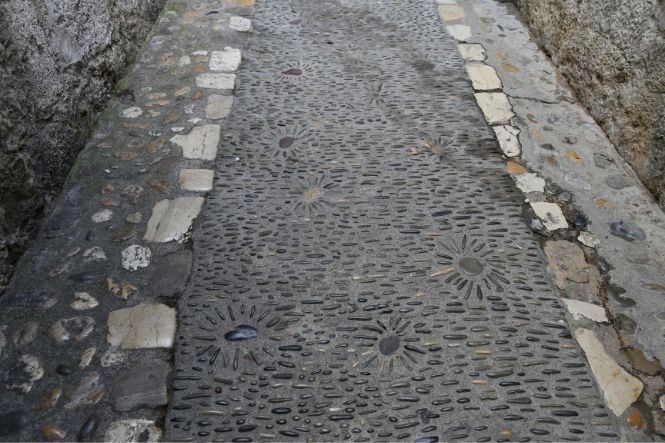There are many different choices for driveway materials, including all kinds of shapes, sizes, textures and colours. Let’s take a look at some of the more popular selections to try to help you decide which material is the right one to lay outside your home.
Loose Materials
The first category is loose materials, such as pebbles, shingle or Gravel. These are cheap to lay in the first place and require less in the way of supporting layers than a hard surface, but will need regular topping up. They are natural materials, though, and will also help with the current ecological focus on driveways – by retaining rain water where it falls rather than sending it straight into the storm drain or sewer system.
Slabs and Flags
The next category is solid materials laid in blocks. There are two main types, natural and manufactured, and they come in a variety of shapes and sizes, too. Natural stone can be found in the form of slabs (also known as flags), large square or rectangular blocks. They can also be found in smaller blocks, known as setts or cubes, in a wide variety of sizes and colours.
Manufactured slabs or flags are usually made from concrete that’s been pressed into shape. Often coloured and textured during the process, there’s a bewildering variety of types and the choice is only limited by the size of your pocket. There are some very convincing imitations of natural stone and some stunning designs that do not pretend to be anything else but man-made.
Artificial Blocks
Then there are the smaller concrete blocks (or pavers) that have become very popular, particularly with specialist firms who only lay drives. Often seen laid in a herringbone pattern, they are difficult to lay accurately, level and to the right gradient, because of their small size. When they are laid properly, however, they look very good.
Artificial blocks are also made from Clay, and are not that much different to building bricks. They are generally considered better looking than their concrete brethren and are consequently more expensive. But they take a little bit more looking after or they can attract moss and algae.
Cobbles
Large rounded pebbles such as duckstone or Cobblestone can be found in a variety of colours and sizes. They differ from gravel and smaller pebbles in that they have to be set into the bedding layer, usually concrete. They give a superb period feel but can be treacherous underfoot when it rains.
Solid Surfaces
Then there are the solid surfaces, concrete, tarmac and aggregates. Concrete can look very basic but it is cheap. There are new developments such as ‘stamped’ concrete, where the poured concrete is tinted and then stamped with a pattern before it dries out. This can look very good but can also go very wrong, so it’s vital to use a reliable tradesman who can give good local references.
Tarmac can look good, too, particularly if it matches the road that your drive leads from. It’s relatively expensive for a small drive but will last well if the foundations are done correctly. But be wary if you enjoy working on cars or motorcycles, as petrol and other oily products will dissolve the binding agent in the tarmac. If this is the case, concrete is probably a better choice.
Aggregates are essentially crushed rock, sand and gravel, and often a by-product of quarrying. They come in a wide of shapes and colours, which are then set in a clear epoxy resin. These must be laid by a qualified professional and are usually more expensive than any other method. But the cost is worth it for some people, for the finish and spectacular effects that can be achieved.
Miscellaneous Products
There are other less mainstream products available and many will be getting more popular as the furore about flooding increases. There are open cell blocks, of either concrete or plastic, that allow grass to be sown in the gaps of the cells, and reinforced matting that can be laid over grass, allowing it to grow through. These latter meshes are not really durable enough for day-to-day parking at the moment though.
Permeable concrete blocks are getting more popular as an answer to the run-off problem, but they still mean the removal of green space in favour of cars, so they’re unlikely to win the backing of the green brigade. They are better than a completely solid non-permeable surface, though.
Peruse the Rest of Our Site
Of course, this quick run-though will not be enough to decide what to buy. Apart from anything else, the amount of groundwork and the required supporting layers will be different, and that all needs to be taken into consideration, too. Your choice is likely to be dictated by cost, as well and perhaps whether a surface has to be professionally laid or can be done by a handy householder. Have a look through the rest of our articles and you should be able to make a decision.


